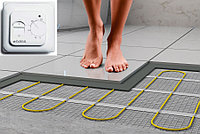The narrow size of some side yards allows the windows of one house to directly face the windows of the neighboring house (Figure 1-28). Figure 1-27
Side yards are sometimes used for storage of cars, trailers, boats, etc. Views Between Houses. This diminishes privacy from these windows. Because side yards tend to be out of the main areas of activity as well as primary lines of sight, they often tend to be used for storing visually objectionable equipment and materials. Expansive side yards tend to be unused as activity areas owing to poor accessibility from within the house. This is especially true of regions that receive significant rainfall. A more extreme solution, which is a common occurrence, is the construction of houses with no windows facing the side yards. 5. Consequently, most side yards are wasted and leftover areas (corner sites or those that do have generous space on one or both sides of the house are exceptions). lack of direct access from the house and because of the narrow space that exists between the house and property line. Figure 1-28
Narrow side yards minimize privacy between adjoining houses. Some side yards tend to be dark, damp, and humid owing to their narrowness and lack of sun exposure. They often tend to be trouble spots owing to the
Figure 1-26
A driveway located in the side yard may leave little room for people to walk. Unlike the front yard or backyard, most side yards seem to have little use except to provide access around the side of the house. 4. 2. Preferred Location for Storage. For vehicular access, a driveway usually fills the side yard, creating problems similar to those of a driveway along a side of the front yard (Figure 1—26). 3. Wasted Space.



